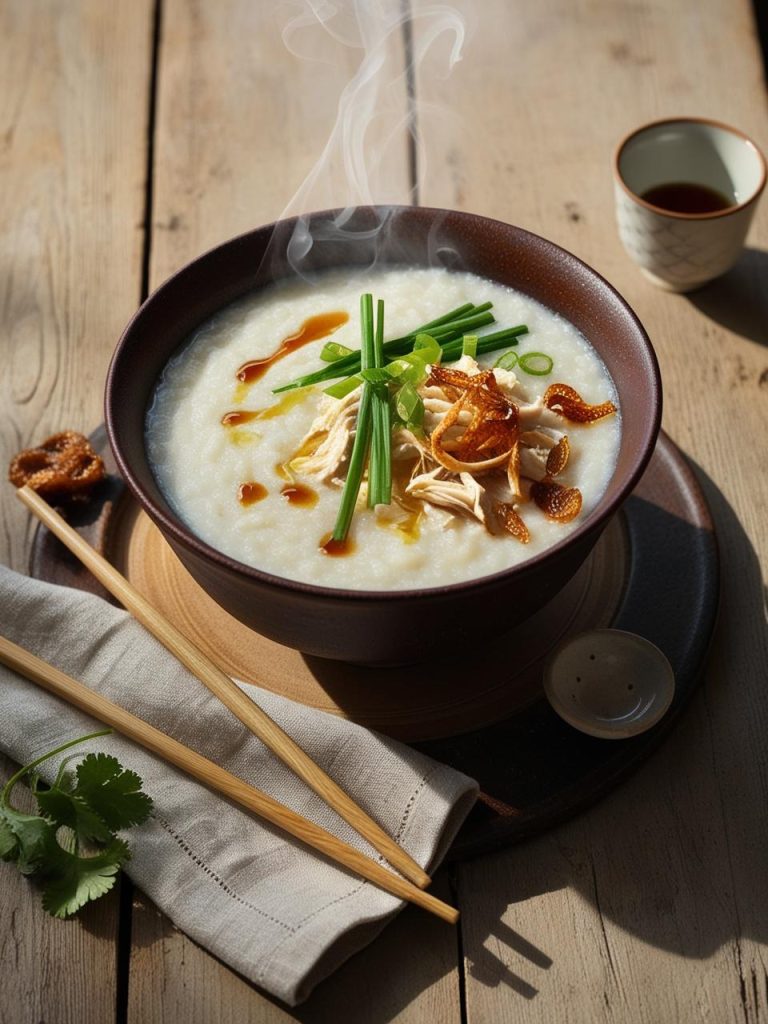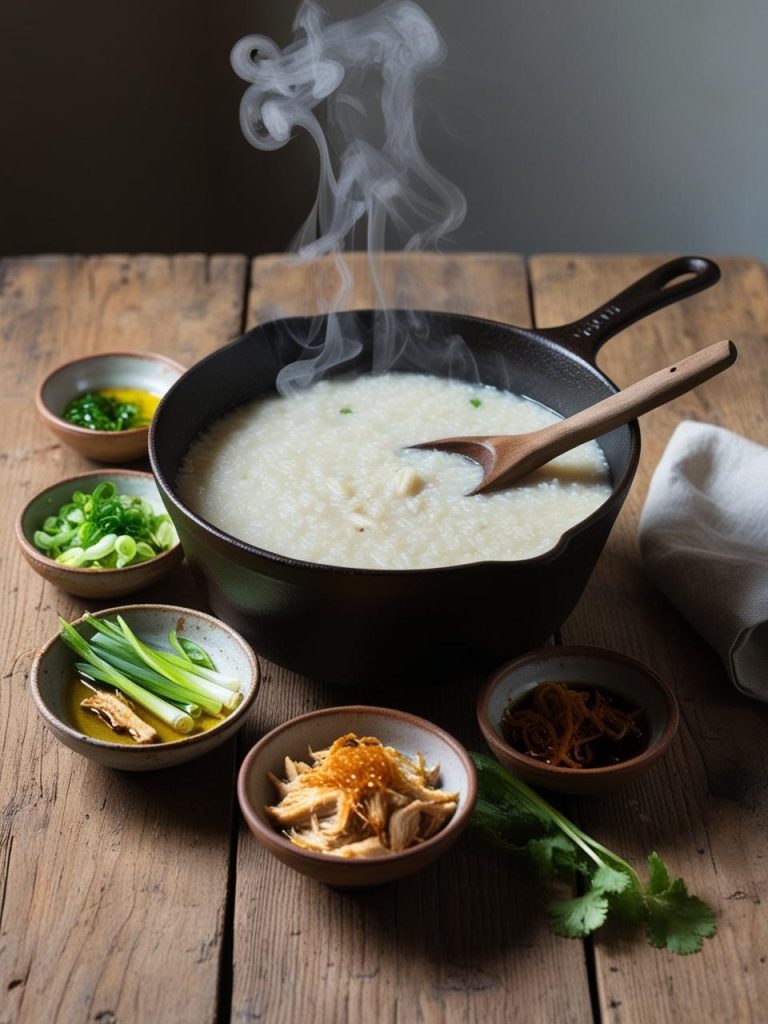The Comfort of Congee: A Bowl of Warmth and Healing
|
Cooking Time: 1 hour |
Servings: 4 |
|
Prep Time: 10 minutes |
Calories: ~200 per serving |
|
Total Time: 1 hour 10 minutes |
Cuisine: Asian |
Some dishes do more than just fill your stomach—they fill your soul. For me, congee is that dish. This humble rice porridge has been my go-to for moments when life felt heavy or my body needed something gentle yet nourishing. Its warmth cradles you like a soft blanket, while its simplicity leaves space for creativity. Whether you’re nursing a cold or just need a taste of home, congee has a way of meeting you exactly where you are.

A Brief History of Congee
Congee has been around for centuries, comforting families across Asia. It’s known by many names: “jook” in Cantonese, “khao tom” in Thai, and “okayu” in Japanese, to name a few. The dish’s origins are rooted in resourcefulness. When rice was scarce, stretching it into a porridge allowed households to make the most of their supplies. Over time, it became a staple for its versatility and ease on the stomach, especially for the sick or elderly. Today, congee continues to warm hearts and bellies worldwide, adapting to countless variations and cultural twists.
What You’ll Need
Making congee is as uncomplicated as it gets, and you probably already have most of the tools in your kitchen:
- A large pot or Dutch oven
- Measuring cups
- Wooden spoon for stirring
- Ladle for serving
Optional but helpful:
- A rice cooker with a porridge setting
- Fine grater for ginger

Ingredients
Congee is wonderfully flexible, but here’s a classic base to get you started:
- 1 cup of white rice (short-grain or jasmine work best)
- 8 cups of water or broth (chicken or vegetable)
- 1-inch piece of ginger, thinly sliced
- 1 teaspoon salt (adjust to taste)
- Optional toppings:
- Shredded chicken, cooked fish, or soft-boiled eggs
- Chopped scallions
- Soy sauce or fish sauce
- Sesame oil
- Fried shallots or garlic
- Fresh cilantro
How to Make Congee
- Rinse the Rice: Start by rinsing the rice under cold water until the water runs clear. This removes excess starch and helps achieve a smooth, creamy texture.
- Combine Ingredients: In a large pot, combine the rinsed rice, water or broth, ginger slices, and salt. Bring to a boil over medium-high heat.
- Simmer Gently: Once boiling, reduce the heat to low and let the mixture simmer uncovered. Stir occasionally to prevent sticking. The rice will gradually break down and thicken the liquid into a porridge-like consistency. This usually takes about 45-60 minutes.
- Adjust Consistency: If the congee becomes too thick, add a bit more hot water or broth and stir. Aim for a silky, spoonable texture.
- Add Protein: If using cooked chicken or fish, shred or flake it into the congee during the last 5 minutes of cooking. Let it warm through.
- Serve and Top: Ladle the congee into bowls and top with your favorite garnishes. Drizzle with sesame oil, sprinkle on some scallions, and finish with a dash of soy sauce for an extra punch of flavor.

Special Notes
- A Base for Experimentation: Congee is like a blank canvas. Feeling adventurous? Add mushrooms, dried shrimp, or even century eggs for a traditional twist. Prefer something sweet? Swap the broth for coconut milk and top with fresh fruits and a drizzle of honey.
- The Magic of Ginger: Ginger isn’t just for flavor; it’s a natural anti-inflammatory and great for soothing upset stomachs. If you’re feeling under the weather, don’t skip this ingredient.
- Rice Choices: While white rice is classic, brown rice or even quinoa can be used for a nuttier, more textured congee. Just adjust the cooking time and liquid as needed.
Nutrition Breakdown (Per Serving)
|
Calories: ~200 |
Carbohydrates: ~38g |
|
Protein: ~6g |
Fiber: ~1g |
|
Fat: ~2g |
Congee is more than a meal; it’s a gesture of care—whether for yourself or someone you love. It’s a dish that whispers, “Take it slow, you’re doing fine.” And sometimes, that’s all we need.
